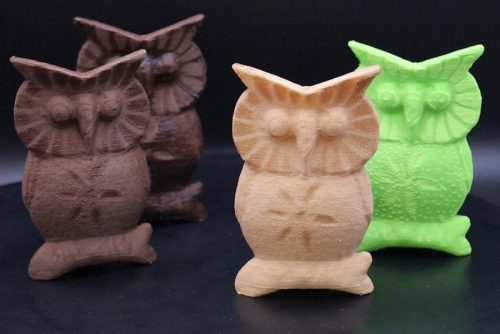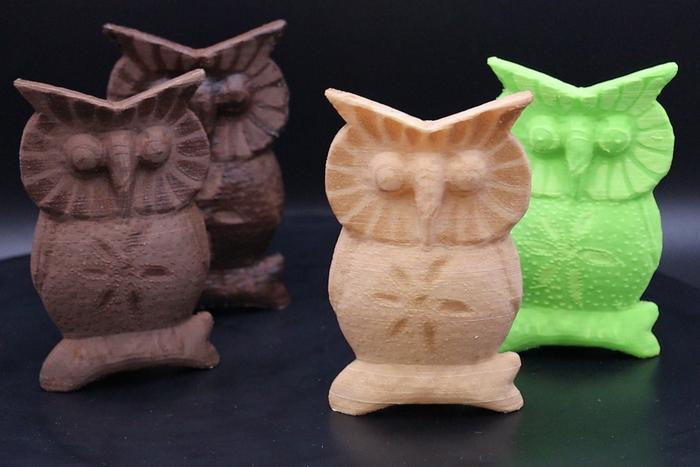Speed-modulated ironing is gaining attention in 3D printing as a more efficient way to produce complex, textured objects—avoiding the slow production speeds and material waste of current multi-material methods. But, what makes this new approach so promising?
It Addresses Traditional 3D Printing Challenges
Printing objects with multiple textures or colors traditionally involves switching materials with different nozzles. This process is cumbersome, slow, and results in significant filament waste. Additionally, the complexity and cost of these printers make them inaccessible to many smaller manufacturers.
So, What's Speed-Modulated Ironing All About?
The technique is detailed in the research paper titled Speed-Modulated Ironing: High-Resolution Shade and Texture Gradients in Single-Material 3D Printingconducted by researchers at MIT and Delft University of Technology.
Put simply, speed-modulated ironing uses a heat-responsive filament with a dual-nozzle system. One nozzle prints as usual, while the second heats the printed layer at varying speeds, creating gradients in color, texture, and transparency—all from a single material.
“Today, we have desktop printers that use a smart combination of a few inks to generate a range of shades and textures. We want to be able to do the same thing with a 3D printer — use a limited set of materials to create a much more diverse set of characteristics for 3D-printed objects,” said co-author of the paper Mustafa Doğa Doğan PhD '24 .
You might wonder, is this really new? After all, dual-nozzle 3D printers have existed for years, and you could use the second nozzle to heat and smooth out the first layer. However, the true innovation here isn't the basic ironing process—it's the idea of using modulated ironing to selectively change the texture and appearance of specialized filaments. This method allows for precise control of surface details, something traditional ironing techniques couldn't achieve.
How does this work? It's all about speed. By modulating the speed at which the second nozzle moves, the amount of heat applied changes. This allows for fine-tuned control over how the material reacts—whether that means smoothing gradients in texture or adjusting transparency. Essentially, the technique programs visual and tactile features into a single-material print with surprising precision.
“As we modulate the speed, that allows the printed layer we are ironing to reach different temperatures. It is similar to what happens if you move your finger over a flame. If you move it quickly, you might not be burned, but if you drag it across the flame slowly, your finger will reach a higher temperature,” explained Marwa AlAlawi, a mechanical engineering graduate student at MIT.

No complicated material swaps
Unlike traditional multi-material systems, this approach doesn't require specialized hardware or complicated material swaps. The nozzle's temperature remains constant while the speed changes, which in turn modulates the filament's response. The implications of this are huge: lower operational costs, fewer production delays, and a reduction in material waste. It also opens the door for smaller manufacturers to create sophisticated products without investing in high-end multi-material printers.
Detailed gradients and textures
A key finding was the ability to create detailed gradients and textures, like small text or QR codes, using just one material. This is a significant breakthrough because it makes creating intricate designs much simpler and less costly. Previously, achieving this level of detail required multiple materials and frequent switching, which made the process slow, expensive, and complicated.
The Promise for Different Industries
Speed-Modulated Ironing has practical, real-world applications:
- Automotive and Aerospace: Imagine being able to create lightweight, custom-textured components without the added hassle of multi-materials. This technique could save time and material while still delivering the strength and customization these industries need.
- Medical Devices: For manufacturers of custom prosthetics or ergonomic tools, speed-modulated ironing can offer tailor-made textures and levels of translucency, improving comfort and usability in products designed to meet individual needs.
- Consumer Goods: The possibilities for consumer products are endless—think custom athletic grips, intricate patterns on home decor, or even personalized kitchenware. The beauty of this technique is that it allows for these customizations without added environmental impact or high production costs.
- Architectural models: Architects could use this technique to create highly detailed models with different textures, allowing clients to visualize surfaces like stone, wood, or metal—all from a single filament.
- Educational tools: Schools and universities could produce cost-effective, detailed models for teaching purposes. For example, biology classes could use textured models to represent various parts of anatomy, enhancing the learning experience.
- Fashion and Footwear: Designers could create unique textures and intricate patterns for clothing accessories or footwear, enabling rapid prototyping and customization without additional materials.
Rethinking 3D Printing's Potential
What speed-modulated ironing really signals is a shift in the mindset around 3D printing—from focusing on increasing the diversity of materials to enhancing the efficiency and capability of the process itself. By simplifying the workflow, the technique could make advanced manufacturing methods accessible to smaller players who have been locked out of the market by the high costs of multi-material printers.
For manufacturers, the benefits are clear: faster production times, lower costs, and the ability to deliver unique products tailored to specific needs, all while minimizing environmental impact. This approach can revolutionize the ability to produce items with complex visual and tactile properties while cutting down on both material use and waste.
Speed-modulated ironing is more than just an interesting new tool; it's a fresh approach that could redefine what's possible in 3D printing. By enabling the creation of intricate designs without the need for complex machinery or multiple materials, this technique could level the playing field, especially for smaller manufacturers.
Citation:
Mehmet Ozdemir, Marwa AlAlawi, Mustafa Doga Dogan, Jose Francisco Martinez Castro, Stefanie Mueller, and Zjenja Doubrovski. 2024. Speed-Modulated Ironing: High-Resolution Shade and Texture Gradients in Single-Material 3D Printing. In Proceedings of the 37th Annual ACM Symposium on User Interface Software and Technology (UIST '24). Association for Computing Machinery, New York, NY, USA, Article 121, 1–13. https://doi.org/10.1145/3654777.3676456









